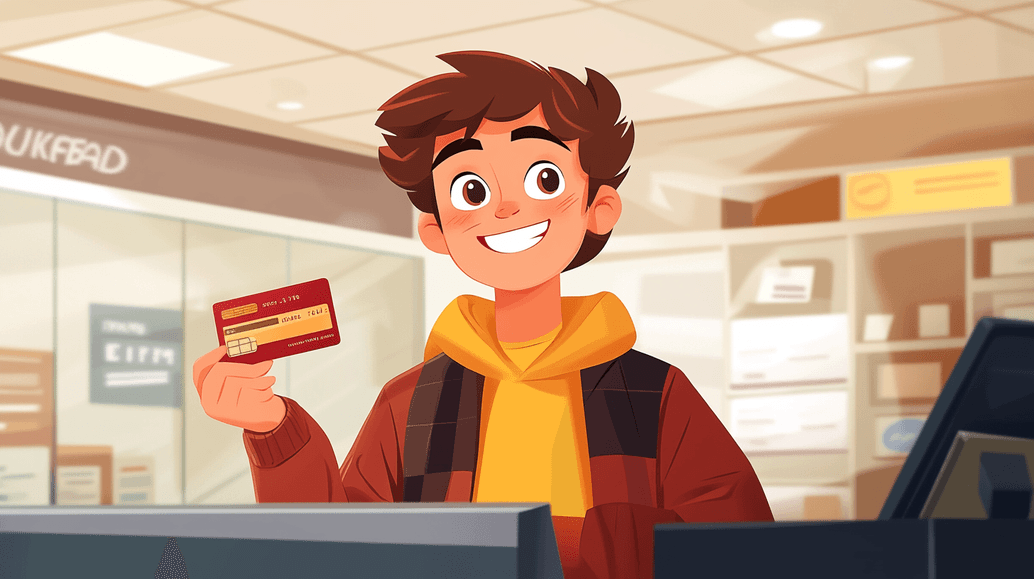Capital One Cash Advance Fee: What You Need to Know

Getting some quick cash when you need it is a pretty simple affair. Just locate the nearest ATM, and in a couple of minutes you’ll get access to all the funds in your account. What can go wrong? Well, nothing, as long as you’re willing to part with a lot of additional money. Cash advance fees are as old as banking itself, and they’re surprisingly nuanced.
Take Capital One, for example. How much is the cash advance fee for Capital One? How can you reduce or even avoid it? Is there an alternative way to get cash? Read on to find out!
How to Get a Cash Advance with a Capital One Card

How to get money off a Capital One credit card? There are three ways to do so:
- ATM withdrawals;
- Bank withdrawals;
- Using convenience checks (if available).
Capital One credit card cash advance fee will apply in all three cases, as well as additional charges, withdrawal conditions, limits, etc.
Let’s take a closer look at all the cash withdrawal options, their withdrawal procedures, and the nuances specific to each method.
ATM Withdrawals
Does Capital One allow cash advances through ATMs? Of course! However, the process can still be tricky for new users. Here is a step-by-step guide on how to withdraw money from Capital One ATMs or the bank’s partners (like Allpoint):
- Insert your credit card into the ATM and enter your PIN;
- Select the “Cash Advance” option, or look for it under the “Credit” menu if it's not immediately visible on the main screen;
- Follow the on-screen prompts to withdraw cash.
If you don’t have a PIN (for example, if you forgot it), you can request a temporary code for cash withdrawal. Follow these steps:
- Log into your Capital One account via a browser or use the bank’s mobile app;
- Find the “Get Cash Advance PIN” option. It may be hidden within a section related to credit accounts;
- Receive the code through secure channel like your phone number or linked email address;
- Use the code at the ATM where you want to withdraw cash;
- Collect your money.
Don’t forget about the Capital One credit card ATM fee, which will be deducted from your outstanding balance. Also, keep in mind that cash advances do not have a grace period, but we will discuss this later in more detail.
Bank Withdrawals
Does Capital One offer cash advances at branches? Yes, but only if you are eligible to withdraw cash from your credit line.
To get the money, you need to visit the nearest Capital One branch with your bank card and a valid ID. As usual, a driver’s license will suffice.
When making a cash request at a branch, the same conditions apply as for ATMs. Note that you won’t have to pay the ATM service fee in this case. Finally, if you cannot remember your PIN and do not have access to a bank branch, there’s one more method you can use.
Using Convenience Checks (if available)
Sometimes, Capital One sends customers special statements, checkbooks, or individual checks. These can sometimes serve as a cash equivalent, but conditions do apply:
- You have a sufficient credit limit on your bank account.
- The merchant you’re purchasing from accepts checks.
This method can be a life-saver in certain situations. However, keep in mind that the conditions are the same as for other withdrawal options.
Capital One Cash Advance Fee Breakdown
How much does Capital One charge for a cash advance? Well, it depends on the situation. Cash advances entail the following fees:
- Percentage fee or flat fee per transaction. $5 or 5% of the withdrawn cash amount, depending on which is greater.
- Minimum cash advance fee. Usually, this is $5, but there may be exceptions depending on the type of card you use.
Here’s how the Capital One cash advance interest rate differs depending on the card:
Card | Is cash advance offered? | Cash advance fee | Cash advance APR (variable) |
|---|---|---|---|
Capital One Platinum Credit Card | ✓ | $5 or 5% | 29.99% |
Capital One Platinum Secured Credit Card | ✓ | $5 or 5% | 29.99% |
Capital One Quicksilver Cash Rewards Credit Card | ✓ | $5 or 5% | 29.49% |
Capital One Quicksilver Secured Cash Rewards Credit Card | ✓ | $5 or 5% | 29.99% |
Capital One Quicksilver Student Cash Rewards Credit Card | ✓ | $5 or 5% | 29.99% |
Capital One QuicksilverOne Cash Rewards Credit Card | ✓ | $5 or 5% | 29.99% |
Capital One Savor Cash Rewards Credit Card | ✓ | $5 or 5% | 29.49% |
Capital One Savor Student Cash Rewards Credit Card | ✓ | $5 or 5% | 29.49% |
Capital One Spark Cash Plus | ✓ | $5 or 5% | None (this is a charge card) |
Capital One Spark Miles for Business | ✓ | $5 or 5 percent | 32.34 percent |
Capital One Venture Rewards Credit Card | ✓ | $5 or 5% | 29.49% |
Capital One Venture X Business | ✓ | $5 or 5% | None (this is a charge card) |
Capital One Venture X Rewards Credit Card | ✓ | $5 or 5% | 29.49% |
Capital One VentureOne Rewards Credit Card | ✓ | $5 or 5% | 29.49% |
Withdrawing cash from a credit card comes with extra risks, including potential impacts on your credit score, higher interest rates compared to standard credit, and no grace period for repaying the balance. Therefore, it’s worth exploring other alternatives if you need some funds for immediate purchases.
How to Avoid or Minimize Cash Advance Fees

$5 or a 5% instant fee might not seem like much, but additional fees can add up extremely quickly. So, it is worth considering alternatives, including:
- Personal loans. Credit unions and even some banks offer personal loans with grace periods or lower APRs than cash advances.
- Regular credit. Usually more favorable terms with lower interest rates and payment deferrals.
- Own funds. Withdrawing cash from savings cards (reward cards) usually doesn’t entail a fee, though some ATMs still charge a service fee.
- Transfers between accounts. You can use credit funds to top up savings cards and make payments with lower fees.
As you can see, there are plenty of attractive alternatives, as withdrawing cash from credit lines has both direct and non-obvious drawbacks. More about them later.
Other Costs Associated with a Cash Advance
Interest charges on cash advances from Capital One might not be the highest on the market, but they are far from the only factor when deciding whether to use a cash advance.
Just take a look at a few significant reasons to consider some alternatives before taking a cash advance:
- Too high APR. $5 or 5% of the amount, depending on which is greater, plus up to 32.34% in fees.
- Negative impact on credit score. A cash advance affects your credit rating, so it’s best not to use it without a good reason.
- No grace period. Interest starts accruing immediately, so you end up paying more anyway.
- Potential transaction limit. Both the card/account and the ATM you use may place restrictions on the amount of cash that can be withdrawn at once.
Here is what the difference between cash loans and regular credit purchases looks like:
| Regular Purchases | Cash Advance |
|---|---|---|
APR (Interest Rate) | Usually 15–25% (varies by card & creditworthiness) | Typically, 25–30%+ |
Interest-Free Grace Period | Yes (Usually ~25 days if the balance is paid in full) | None (Interest starts immediately) |
Fees | No fee (unless the balance isn't paid off) | 3–5% fee per advance ($5 min) |
How You Access It | Swiping, online purchases, contactless payments | ATM, bank teller, or convenience check |
Credit Utilization Impact | Standard impact (reduces available credit but can be paid off before interest accrues) | High impact (affects available credit immediately) |
So, if you don't want to overpay, we recommend that you consider alternative methods for funding your purchases. You can find detailed reviews and guides on various cards and credit unions you can turn to on the Rates portal.




